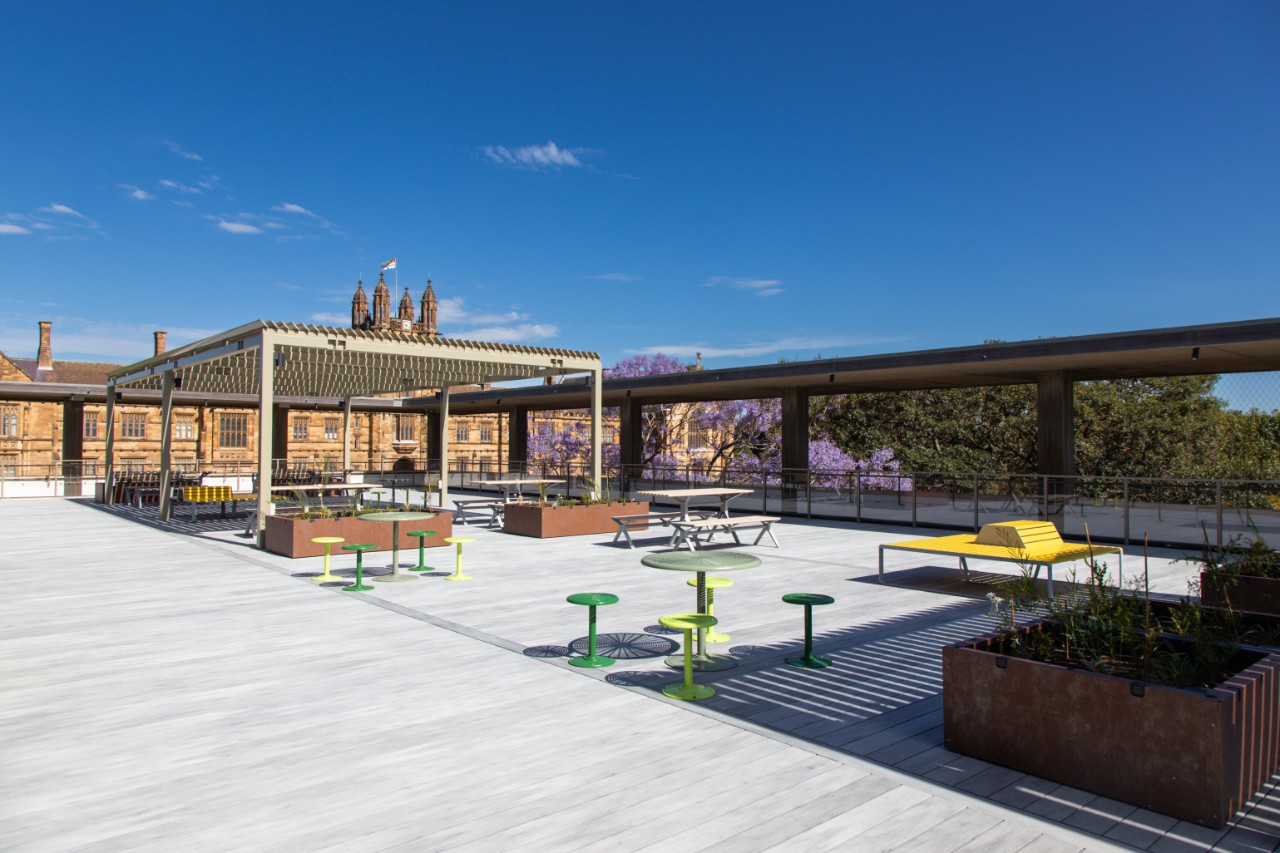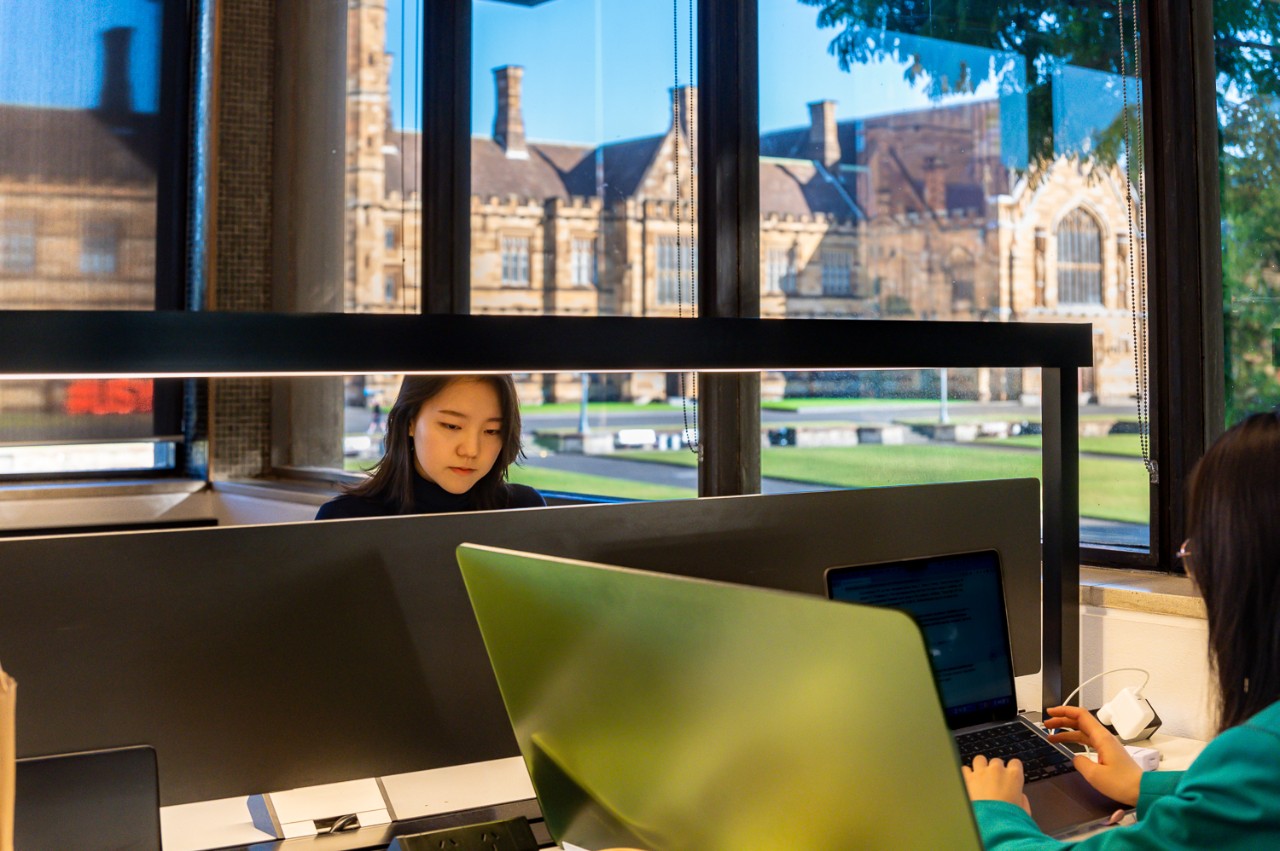History of the Library
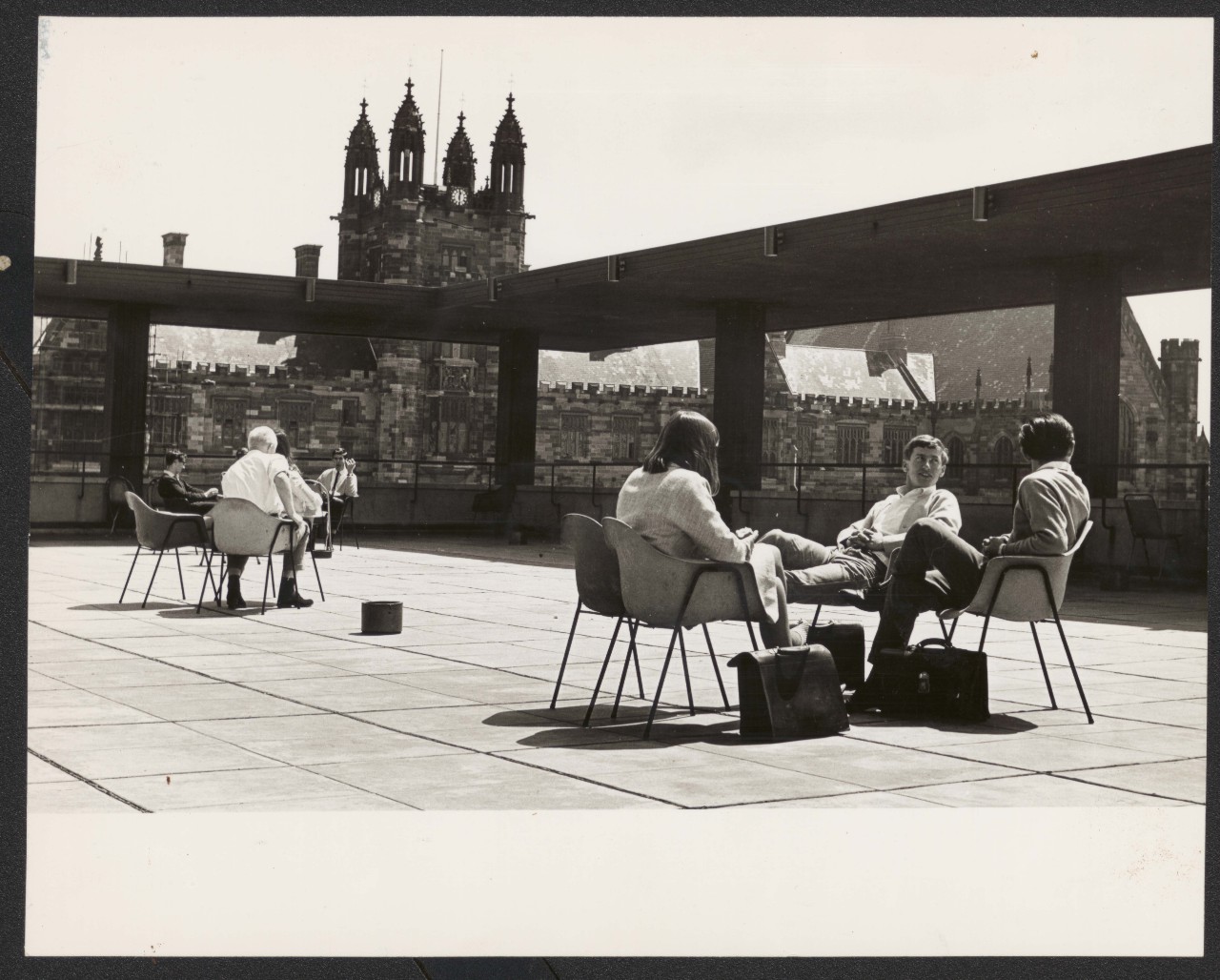
Foundations
When one imagines a successful academic institution, one often starts with the grand façade of a library, followed by rows of desks filled with students, and bookshelves lined with books. After all, what is a university without a large and resource-filled library?
This is something the founders of the University of Sydney understood well. One of their first orders of business upon opening in 1850 was the foundation of a university library. Months before any professors were appointed or students were enrolled, a committee was formed to select books for the library’s collection. It was a slow process. While books were sporadically accrued, it wasn’t until 1857 that a physical space – a room in the University’s main building – was prepared to function as a library. And it wasn’t until 1878 that the University received its first major bequest: 4,000 volumes from the personal library of lawyer Nicol Stenhouse, which had been bought by Sydney businessman, Thomas Walker, and donated.
While Walker’s donation was significant enough to prompt plans for a dedicated library building, it would take another deeply generous donation before these plans could become a reality.
Fisher
Thomas Fisher was a bootmaker and property investor who lived near the University of Sydney campus in Darlington. He was the son of former convicts, John Fisher and Jemima Bolton. While he was not formally educated himself, he enjoyed spending time on the grounds, talking with staff and students and attending official functions. In 1879, it’s believed Fisher heard an appeal from the Chancellor, Sir William Manning, for "one of our men of great wealth and equal public spirit" to fund "a library worthy of comparison with like edifices at Home".
When Fisher passed away in 1885, he bequeathed over £30,000 to the University (the equivalent of more than $3.5 million today), to be used for “establishing and maintaining a library”. With this hefty sum, Thomas Fisher became the library’s greatest benefactor, and would soon become its namesake.
How best to spend this incredible bequest was a matter of great debate. Would it be better to put the money towards a brand new building? The salary of a librarian? Or perhaps growing the limited academic collections?
In 1887, the Chancellor, Vice-Chancellor and Library Committee came to the following agreement: £20,000 pounds (plus accumulated interest) would be allocated towards a building, and the remaining £10,000 would be put towards books.
Ultimately, however, the NSW government agreed to fund the full cost of a library building, so the Fisher bequest could be preserved as an endowment fund.
With funding matters settled, construction could finally begin.
The first Library
The very first Fisher Library was designed by Walter Vernon to complement the architecture of the existing Great Hall, with an elaborate cedar roof and gothic stone façade. Inside was a seven-storey bookstack, made of fireproof steel and glass, with two electric book lifts. The building also contained reading space for up to 250 occupants at a time.
Construction began in 1902 and was completed in 1909. Upon the opening of the Fisher Library, the Daily Telegraph described it as “the finest piece of Gothic architecture in Australasia worthy of any institution in the world”.
It was originally thought that this ornate and illustrious building would serve as the University of Sydney Library far into the future. However, the post-WWII economic boom of the 1950s vastly increased demand for education, and the university quickly outgrew its first library building.
By 1954, a new building was prioritised. The Federal and NSW governments agreed to cover the estimated £1,000,000 cost in equal share. A new era was on the horizon.
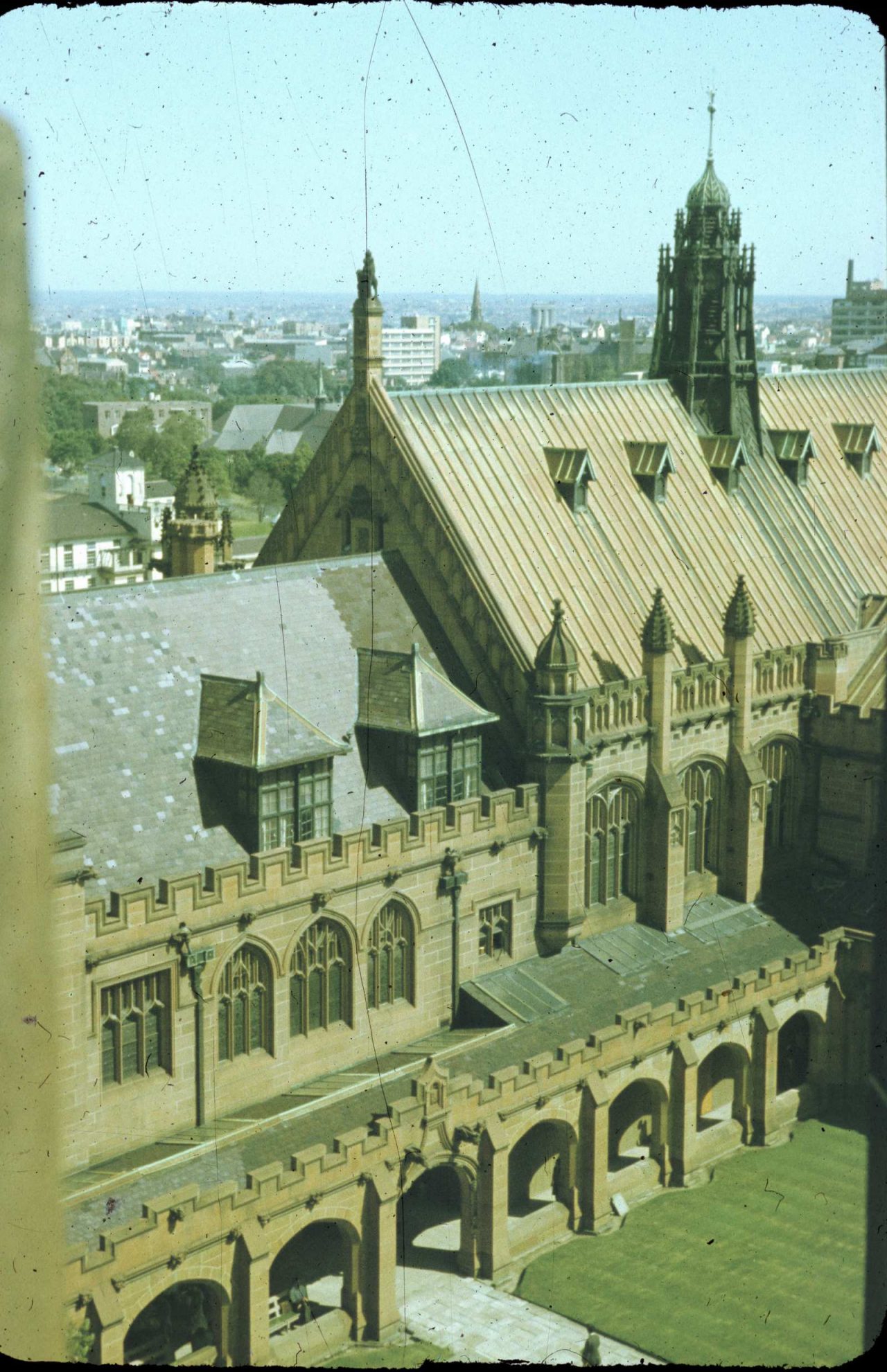
A new Library
Librarian Dr Andrew Osborn came to the helm of Fisher Library in 1959, and led a campaign for a more modern facility with a greater expanse of books. In just 4 years, Osborn doubled the size of library’s collection and helped plan what would become the new and improved Fisher Library, which still stands today.
Osborn’s vision for the Library was inspired by modern designs in America, namely the famous Harvard University Library.
Designed by architects Ken Woolley and Tom O’Mahoney, construction of the new Fisher Library was divided into 2 stages. Stage 1 was the 5-storey undergraduate wing, which was opened in September 1963. Stage 2 was the 9-storey book stacks, completed by 1966.
The mid-century modern design featured open floor plans with sleek surfaces of pre-oxidised extruded bronze and sandstone. It also boasted modern amenities like reverse-cycle air-conditioning, photocopiers, telephone booths, and a music-listening area where students could listen to thousands of LP records through headphones. Outside, a popular roof terrace provided space for staff and students to relax and enjoy some fresh air.
To this day, the Fisher Library is still the only university building to have won both the RAIA Sulman Award and the RIBA Bronze Medal – both prestigious prizes in architecture. To further cement its historical significance, the building also went on to be heritage-listed in 2008.
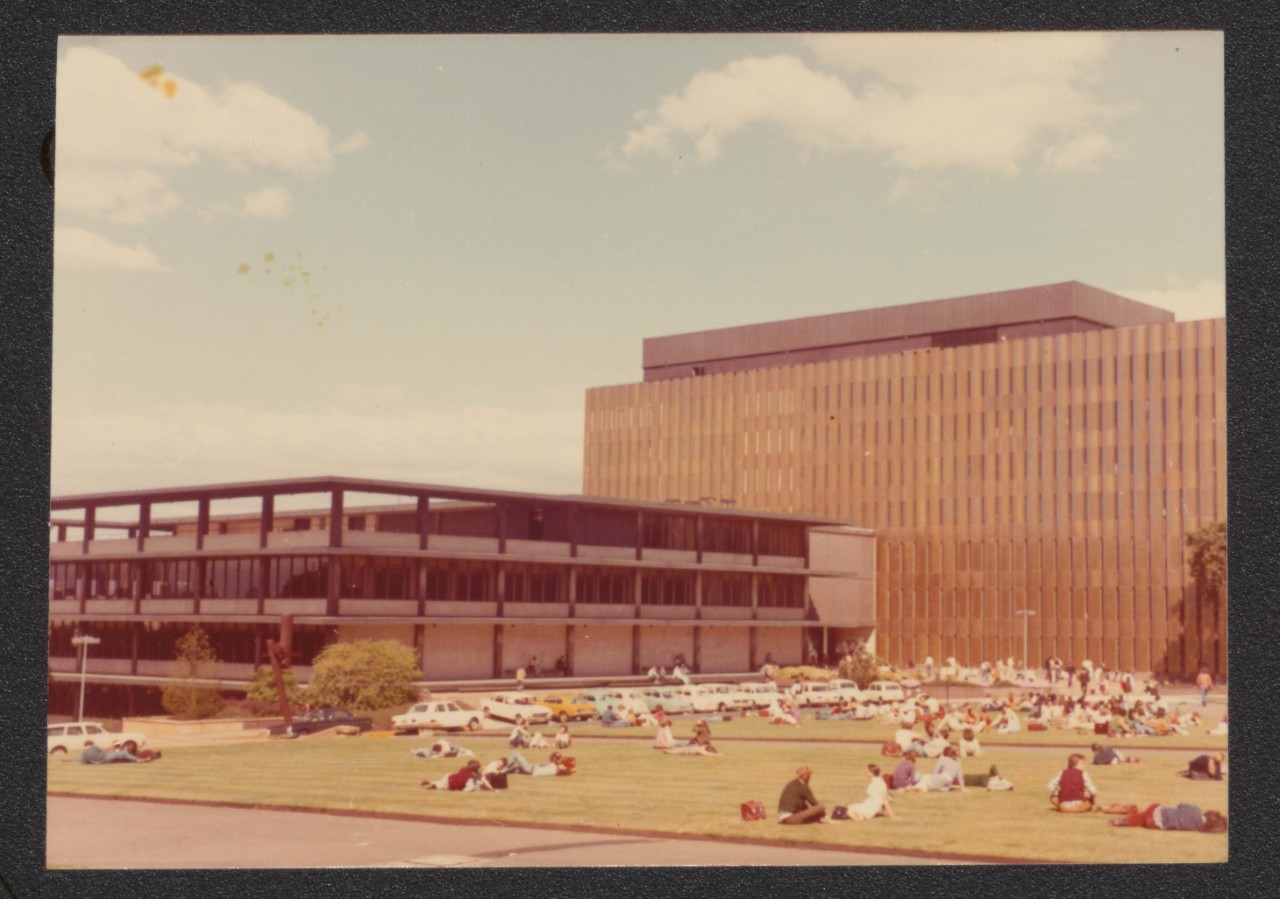
Into the future
Since the 1960s, the Fisher Library has been at the heart of the University of Sydney experience. Today, it receives almost 6000 daily visitors who use the space to study, research and socialise.
While maintaining the Fisher Library’s distinct character, there have since also been significant advancements in resources and technology. Today the Library continues to grow its physical collections, as well as its digital collections and eScholarship repository (with over 1.5 million downloads in 2023 alone).
Following the remoteness induced by covid-era restrictions, there have been recent efforts made to recapture the vibrancy and energy of university life on campus.
The once popular Fisher Library rooftop terrace, which had been closed since the 1990s, has since been refurbished and re-opened to align with the Fisher Library’s 60th anniversary milestone in September 2023.
The regular staffing of Peer Learning Advisors and hosting of year-round events also contribute to the enriching university environment, now and into the future.
